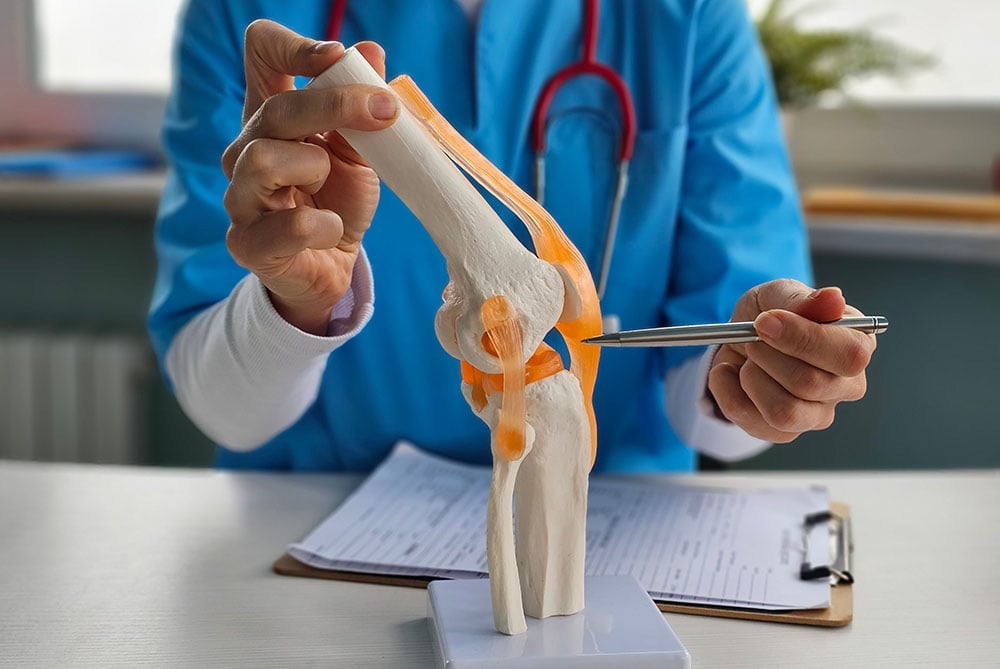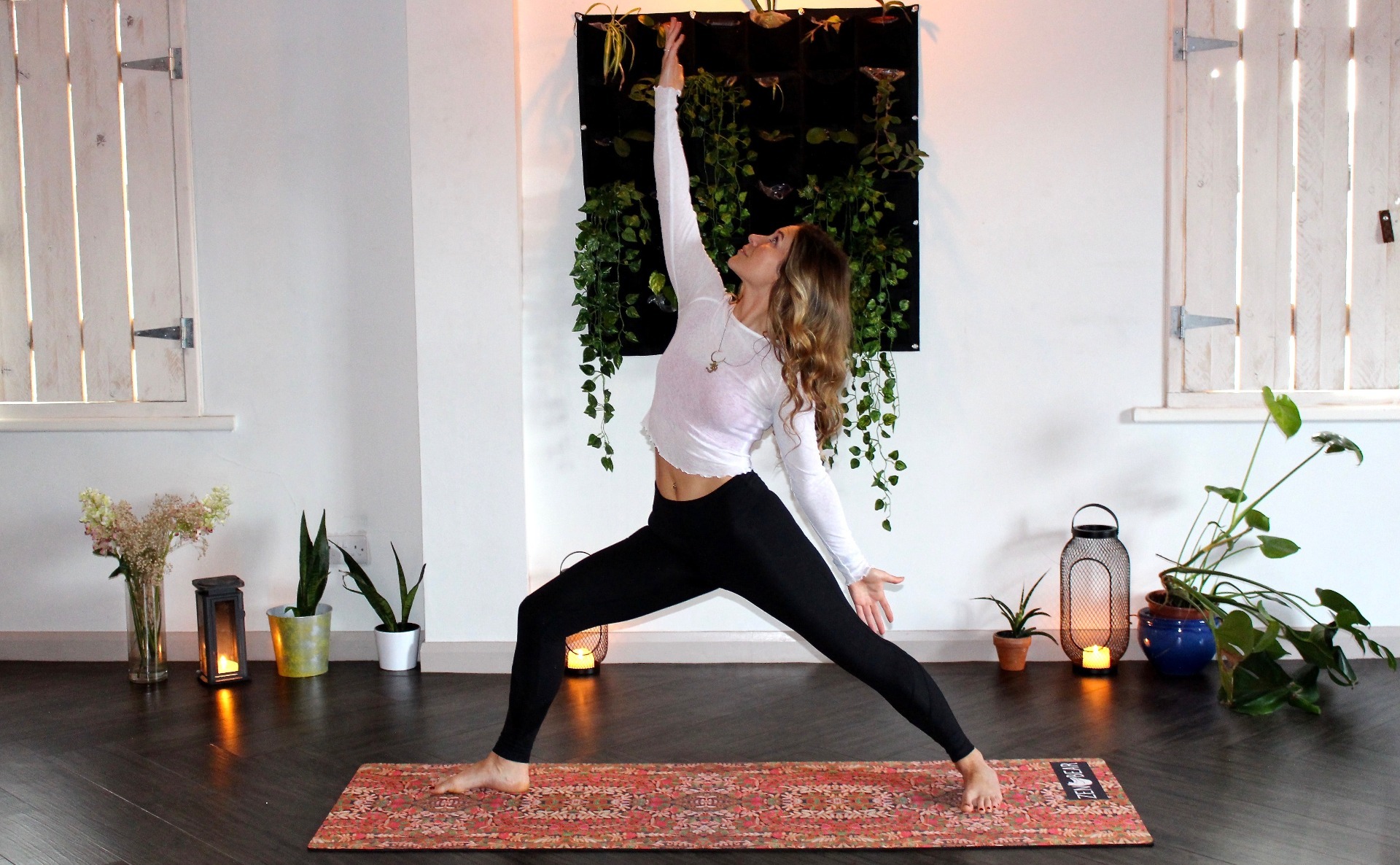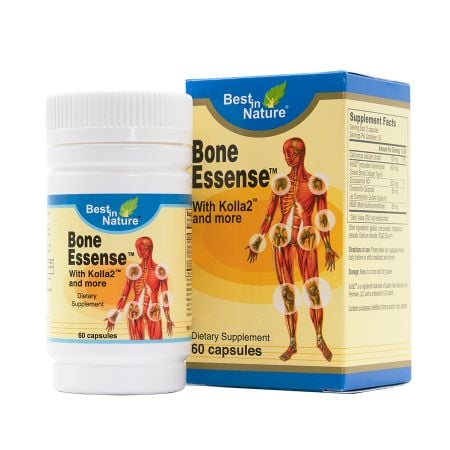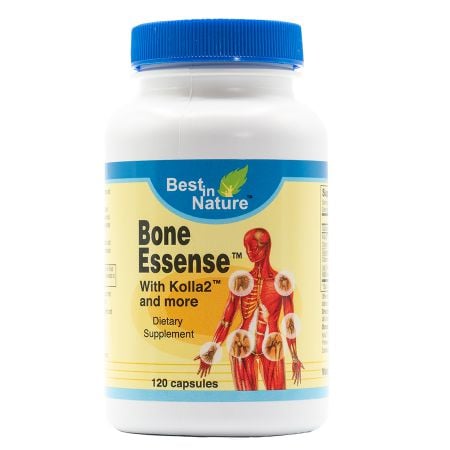
Reviewed and Updated: August 15th 2024
The older we get, the more we have to think of our bodies and how to protect them. From bones to joints to our mental health, our bodies require a little extra care if we want them to function well into old age.
We're going to talk about joint health in this article, giving you a few pointers on how you can stay mobile and avoid arthritic issues. You'll find that maintaining healthy joints isn't too tough if you start managing things early on.
Let's take a look at the various ways you can maintain your joint health.
1. Stay on the Move

We'll discuss a few options for exercise in this article because exercise is the first defense against joint issues.
Sure, strenuous activity on a regular basis can harm your joints in the long run, but moderate exercise improves your joint health. Difficult climbing and long runs on bumpy terrain can over-exert your muscles, ligaments, and joints.
However, a simple walk in your regular routine is enough motion to get your blood circulating and activate your synovial fluid, which lubricates joints to reduce fiction. The same could be said for an activity you love like golfing, basketball, tennis, or anything else that keeps you moving.
These forms of exercise also keep your muscles fit, which helps protect and support your joints. Just make sure to always do a quick warm up before starting exercise and stretch your muscles after your workout, never before.
2. Keep a Healthy Body Weight
This can be easier said than done as we settle into adult lifestyles, but try your best to keep your body's ideal weight.
Healthy body weight can ward off issues with your bones, joints, cardiovascular system, mind, and much more. In regards to our joints, excess weight can cause problems with the load-bearing joints like the ones in our knees and ankles since every pound you decrease from your weight, takes off four pounds of pressure to your joints.
Over time, these issues manifest with pain, arthritis, and difficulty moving. The nice thing is that paying close attention to the ideas expressed in this article will help to ward off weight gain. It seems that one positive thing you do for your body benefits numerous things within it.
3. Do Low-Impact Exercise

We already mentioned the dangers of excessive high-impact runs above. The damage to your joints comes from the repetitive, intense pressure put on them from long runs and extreme strength training routines.
Your long-term health will benefit more from things like swimming, cycling, walking, and other options that don't place a lot of stress on your knees and ankles.
Keep this in mind in your daily life as well. We often do things that we don't realize are tough on our joints. Your job might require you to jump off of the back of a truck, or repeatedly lift heavy objects. If you feel some pain in your joints and you're not sure why, page back through your daily routine and see if anything you're doing is placing repeated stress on a particular joint. Remember that excessive weight makes any of this much worse.
4. Yoga and Pilates

Yoga and pilates are great low-impact routines that benefit the body and mind. These activities can also help the flow of lymph and synovial fluids in the body (synovial fluid lubricates the joints) which decrease inflammation, and strengthen the muscles surrounding the joints. These exercises will explore your full range of motion and even push you to become more flexible.
On top of all that, they also help you lose weight and gain mental clarity.
5. Warm Up Instead of (static) Stretching
Stretching before your muscles are warm can actually cause joint problems and interestingly may actually decrease athletic performance for those who do competitive sports.
Instead, try to get your body moving enough to raise your body temperature and even break a little sweat if possible. Warming up gets the blood flowing to your muscles, lubricates joints, wakes you up, and lowers the chances that you'll get injured.
Doing some light cardio for about 5-10 minutes is a great way to get warmed up, but try to make sure that you activate the muscle groups you're going to exercise later in your warm-up.
6. Use Your Whole Range of Motion
As you start to get into low-impact exercise, try to find activities that allow you to use the full range of motion in your joints. Practices like yoga are designed to use joints to their full potential, but you can also enjoy other activities that don't require as much commitment.
There are simple exercises you can do at home that access a full range of motion in all of your joints. Using joints in this way helps to keep them lubricated with synovial fluid. If you don't get to exercise your whole range of motion, your joints will stiffen up and arthritis can start to form.
7. Use Good Form and Posture

A healthy body is situated with good posture and form when performing daily tasks like walking, sitting, standing, jumping, and lifting. We have to do these things, and we've always had to.
As a result, there's a way that we can move through our life, performing different motions, without putting too much stress on our joints. It might be wise to talk with a specialist about your posture and have them direct you on ways you can improve.
Be mindful of motions or behaviors that you perform on a daily basis. For example, the way you sit and watch television at the end of the day could be putting stress on your back and joints. Additionally, the way you look down at your phone while walking to work might be burdening your shoulders.
8. Work on Your Core

Falling is the source of many joint injuries. In fact, the CDC reports that 800,000 patients a year are hospitalized as a result of a fall injury and 95% of all hip fractures are a result of falling. How does this work? Well, the truth is core muscles play a big role in maintaining balance in the body; these muscles assist the body by anchoring the center of gravity and maintaining balance. So developing a stronger core is a great way to increase your balance, decreasing the chances for most falls. Try doing some light core exercises when you begin your low-impact routine. Over time, you'll find that you're a little sturdier and more confident as you walk or run.
9. Ice Pain When It Occurs
When your joints start to feel a little achy or painful, your first home remedy should be to ice them.
Ice can help to ease inflammation and stop the pain from developing. This is only a short-term response to serious joint issues, though. Ice joints when you don't have the ability to get the issue checked out, or if it's an existing issue that flares up from time to time.
You should apply ice for 5 to 10 minutes and rest without ice for the same amount of time to prevent any skin lesions from the cold ice.
10. Make Changes to Your Diet

Dietary choices are a major contributor to the inflammation associated with many arthritic issues. Try to incorporate anti-inflammatory foods into your diet and avoid foods that contribute to inflammation. Further, you should focus on foods that provide Omega 3 fatty acids, vitamin C, vitamin D, and Calcium.
Vitamin C could slow the onset of osteoarthritis, and calcium along with vitamin D help to strengthen your bones. Calcium is needed for bone production, while vitamin D helps a lot with incorporating the calcium you consume into bone matter.
Sugary foods can do a lot of damage to your joints. If you already have arthritis, you might find that added sugars worsen your pain.
If you're at risk of developing arthritis, it's best to avoid added sugars whenever possible. Additionally, sugary drinks and foods can increase your chances of developing arthritis by up to three times.
Those who eat a healthy diet and exercise but still have arthritic pain should try going gluten-free for a period of time. Gluten-free diets could help arthritis symptoms by cutting down on inflammation.
There isn't enough research to prove that gluten contributes to worsened symptoms of arthritis, but there's evidence to suggest that gluten-free diets can improve symptoms.
11. Quit Smoking
Smoking comes along with a laundry list of serious health risks. One lesser-known risk is that smoking can decrease bone density and lead to osteoporosis.
You're also more likely to experience a bone fracture if you smoke. Risks to your bones have a direct impact on your joints, so you can chalk up one more reason to consider quitting.
12. Add Supplements When Needed
It can be tough to get all of the vitamins and minerals you need for good joint health.
Take a close look at your diet and see if there are any areas that are lacking. In particular, see whether you're getting enough calcium, vitamin D, vitamin C, and Omega 3 fatty acids.
There are supplements for all of those vitamins, and it would be a good idea to incorporate them into your diet, especially if you're having joint trouble. If you're feeling unsure, talk to your doctor and see if and what supplements are right for you.
13. Strengthen Your Muscles
It would be wise to incorporate a full-body workout routine as you start to make these changes. In particular, be sure to focus on the areas that could cause you joint trouble in the future.
Legs, arms, wrists, ankles, and neck are areas to pinpoint. Protecting your joints with strong muscles is a great way to reduce strain and lower the chances that you'll get injured.
14. Stop Wearing High Heels

High heels put your feet in an unnatural position that can actually have some negative health outcomes.
For example, high heels can lead to osteoarthritis over time. Not to mention the unhealthy pressure placed on your ankles as you go throughout your day. Wearing them occasionally won't do long term damage, but it's worth considering wearing different shoes in your everyday life.
15. Hydrate and Cut Down on Caffeine

Our cartilage consists of mostly water, which means that we have to consume enough of it for our bones to be healthy. There are a lot of benefits to drinking enough water, but bone health ranks among the most important.
Caffeine, over time, can weaken your bones. While many people need a bit to wake up in the morning, reconsider that second or third cup.
Bottom Line
Maintaining healthy joints is just one of the pieces of the wellness puzzle. There can be a lot to think about, but the great thing is most of these measures will help you to live an overall healthier lifestyle. Diet and different forms of exercise are some of the best tools we have.
Follow our blog for more health and lifestyle tips.
© 2024 Best in Nature All rights reserved








Validate your login
Sign In
Create New Account